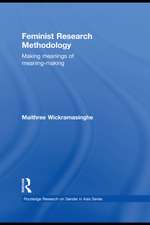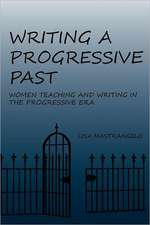(Re)Constructing Armenia in Lebanon and Syria: Ethno-Cultural Diversity and the State in the Aftermath of a Refugee Crisis: Studies in Forced Migration, cartea 21
Autor Nicola Migliorinoen Limba Engleză Hardback – 31 mai 2008
Din seria Studies in Forced Migration
-
 Preț: 258.07 lei
Preț: 258.07 lei -
 Preț: 258.50 lei
Preț: 258.50 lei -
 Preț: 260.02 lei
Preț: 260.02 lei -
 Preț: 263.29 lei
Preț: 263.29 lei -
 Preț: 262.52 lei
Preț: 262.52 lei - 23%
 Preț: 744.59 lei
Preț: 744.59 lei - 23%
 Preț: 806.68 lei
Preț: 806.68 lei -
 Preț: 221.33 lei
Preț: 221.33 lei -
 Preț: 259.42 lei
Preț: 259.42 lei -
 Preț: 264.05 lei
Preț: 264.05 lei -
 Preț: 264.05 lei
Preț: 264.05 lei - 23%
 Preț: 752.00 lei
Preț: 752.00 lei -
 Preț: 261.18 lei
Preț: 261.18 lei - 23%
 Preț: 747.99 lei
Preț: 747.99 lei - 23%
 Preț: 747.39 lei
Preț: 747.39 lei - 23%
 Preț: 745.33 lei
Preț: 745.33 lei - 23%
 Preț: 751.71 lei
Preț: 751.71 lei - 23%
 Preț: 837.40 lei
Preț: 837.40 lei -
 Preț: 303.72 lei
Preț: 303.72 lei - 23%
 Preț: 749.02 lei
Preț: 749.02 lei - 23%
 Preț: 748.86 lei
Preț: 748.86 lei - 23%
 Preț: 752.13 lei
Preț: 752.13 lei - 23%
 Preț: 751.54 lei
Preț: 751.54 lei -
 Preț: 262.32 lei
Preț: 262.32 lei - 23%
 Preț: 835.91 lei
Preț: 835.91 lei -
 Preț: 303.50 lei
Preț: 303.50 lei -
 Preț: 258.28 lei
Preț: 258.28 lei - 23%
 Preț: 747.55 lei
Preț: 747.55 lei - 23%
 Preț: 749.02 lei
Preț: 749.02 lei - 23%
 Preț: 747.25 lei
Preț: 747.25 lei -
 Preț: 256.16 lei
Preț: 256.16 lei - 23%
 Preț: 834.26 lei
Preț: 834.26 lei -
 Preț: 300.83 lei
Preț: 300.83 lei - 23%
 Preț: 748.44 lei
Preț: 748.44 lei -
 Preț: 258.50 lei
Preț: 258.50 lei -
 Preț: 258.66 lei
Preț: 258.66 lei -
 Preț: 256.16 lei
Preț: 256.16 lei
Preț: 749.49 lei
Preț vechi: 973.36 lei
-23% Nou
Puncte Express: 1124
Preț estimativ în valută:
143.43€ • 148.89$ • 119.60£
143.43€ • 148.89$ • 119.60£
Carte tipărită la comandă
Livrare economică 22 martie-05 aprilie
Preluare comenzi: 021 569.72.76
Specificații
ISBN-13: 9781845453527
ISBN-10: 1845453522
Pagini: 256
Dimensiuni: 159 x 19 x 234 mm
Greutate: 0.51 kg
Editura: BERGHAHN BOOKS INC
Seria Studies in Forced Migration
Locul publicării:United Kingdom
ISBN-10: 1845453522
Pagini: 256
Dimensiuni: 159 x 19 x 234 mm
Greutate: 0.51 kg
Editura: BERGHAHN BOOKS INC
Seria Studies in Forced Migration
Locul publicării:United Kingdom
Notă biografică
Nicola Migliorino earned his PhD from the Institute of Arab and Islamic Studies, University of Exeter. His research has focused on Lebanon, Syria, and questions concerning ethno-cultural diversity in the contemporary Arab world. Between 1998 and 2000 he worked for an international NGO assisting Palestine refugees in Syria. He is currently Assistant Professor in International Studies at Al Akhawayn University in Ifrane, Morocco, and Honorary Research Fellow at the Institute of Arab and Islamic Studies, University of Exeter.
Cuprins
List of Tables Acknowledgements Note on Transliteration Introduction Chapter 1. The Origins of the Armenian Presence in Lebanon and Syria: a Brief Historical Account Introduction The Armenian Homeland Armenian Migration to and within the Middle East: The Pre-Ottoman Era The Armenians and the Ottoman Empire The Era of Massacres: The End of the Empire and the Armenian Genocide Chapter 2. (Re)constructing Armenia: The Armenians in Lebanon and Syria during the Mandate Introduction Religious Policy under the Mandate and the Re-establishment of the Armenian Churches Armenian Politics and Public Participation under the Mandate Armenian Associations during the Mandate Armenian Culture and Media during the Mandate Armenian Education during the Mandate The Socio-Economic Position of the Armenians during the Mandate Chapter 3. Coping with Political Change: The Armenians in Lebanon and Syria during the First Two Decades of Independence (1946-1967) Introduction: The Armenians and the Post-Mandate States of the Levant Armenian Politics and Armenian Public Participation in Lebanon and Syria (1946-1967) Religious Policy and the Armenians in Independent Lebanon and Syria (1946-1967) Armenian Education in Independent Lebanon and Syria (1946-1967) Armenian Cultural Production between Flourishing and Decline: The 1950s and the 1960s Armenian Associations and the State in Lebanon and Syria from Independence to the 1960s Political Economy and the Social Position of the Armenians in Lebanon and Syria from Independence to the end of the 1960s Chapter 4. War, Migration, and Strategies of Survival: The Armenians between the Collapse of the Lebanese State and the Construction of Asad's Syria (1967-1989) Introduction Armenian Politics in the Levant From the Mid 1960s to the End of the Lebanese War The Armenian Churches in Lebanon and Syria in the 1970s and 1980s Armenian Education in Lebanon and Syria: The 1970s and 1980s Armenian Associations and the State in Lebanon and Syria: The 1970s and 1980s Armenian Culture and Media in Lebanon and Syria during the 1970s and 1980s The Armenian Communities and the Lebanese and Syrian Economy in the 1970s and 1980s Chapter 5. Difficult Recovery and Uncertain Future: The Armenians in Lebanon and Syria in the 1990s and Beyond Introduction Armenian Political Participation in Contemporary Lebanon and Syria Armenian Churches and the State in Contemporary Lebanon and Syria Coping with Economic Crisis: The Socio-Economic Position of the Armenians in Contemporary Lebanon and Syria Armenian Associations and the State in Contemporary Lebanon and Syria Armenian Education in Lebanon and Syria during the 1990s and Early 2000s Armenian Cultural Production and the State in Contemporary Lebanon and Syria Conclusion Bibliography Index
Recenzii
"... an impressively researched account of one of the major refugee crises of the 20th century ... Migliorino offers a thoughtful account of the Armenian refugees' experience, focusing on religion, cultural production, and communal political organization and covering 1923-2003, a span of three or four generations. This is an analytical narrative of the making of a society, from refugees to citizens - this fine historical account is also an exemplary developmental study of the ways in which refugees create a permanent diaspora society. Relevant to all social scientists. Highly recommended." * Choice


















